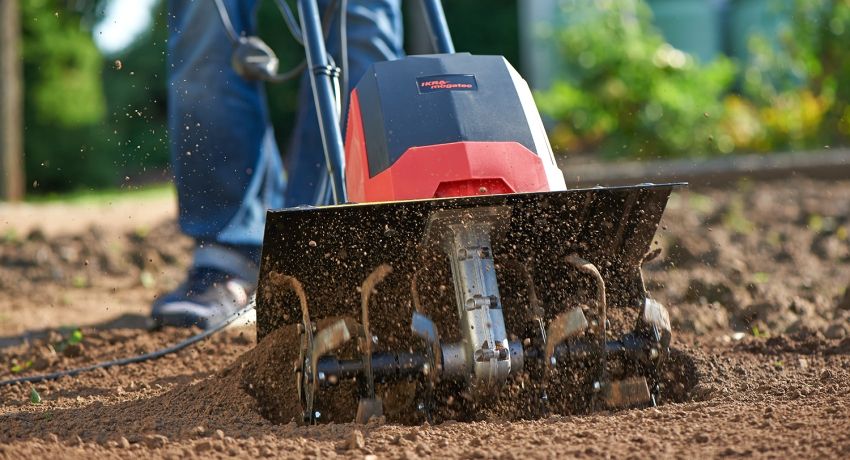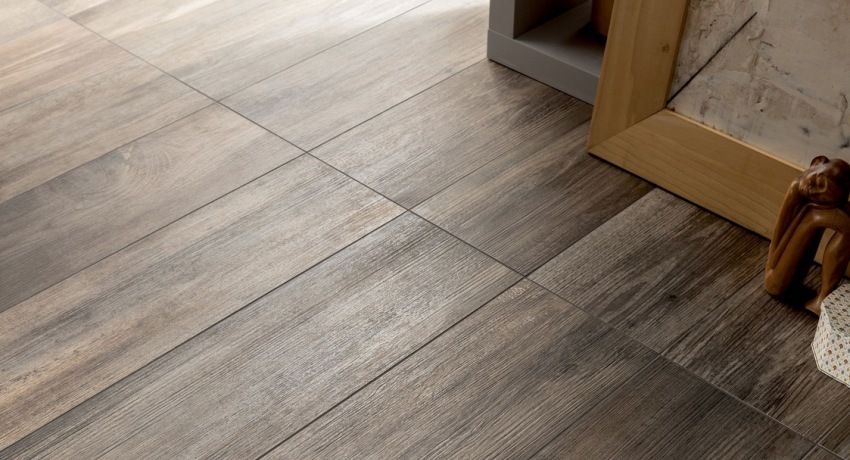When designing a sewage system for a private house, not everyone knows how to do it correctly. Indeed, for its perfect functioning, it is necessary to take into account many factors and to know about some nuances. We will try to understand them in order to build sewage systems in our country house at a professional level.
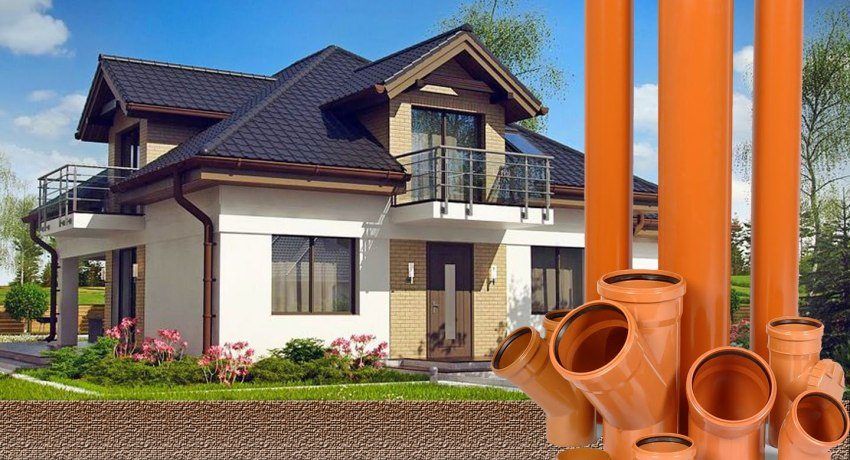
Understanding the autonomous sewer system
The current boom in the construction of private housing has necessitated the development of modern autonomous sewage systems. Their distinctive property is considered to be the ability to ensure the outflow and processing of a large amount of domestic wastewater.
This is due to the expansion of the line of household plumbing devices that require water to function. These include: shower devices, washing machines and dishwashers, a jacuzzi, car wash devices and other similar devices. In connection with their use, the water consumption rates per person were increased to 200 l / day.
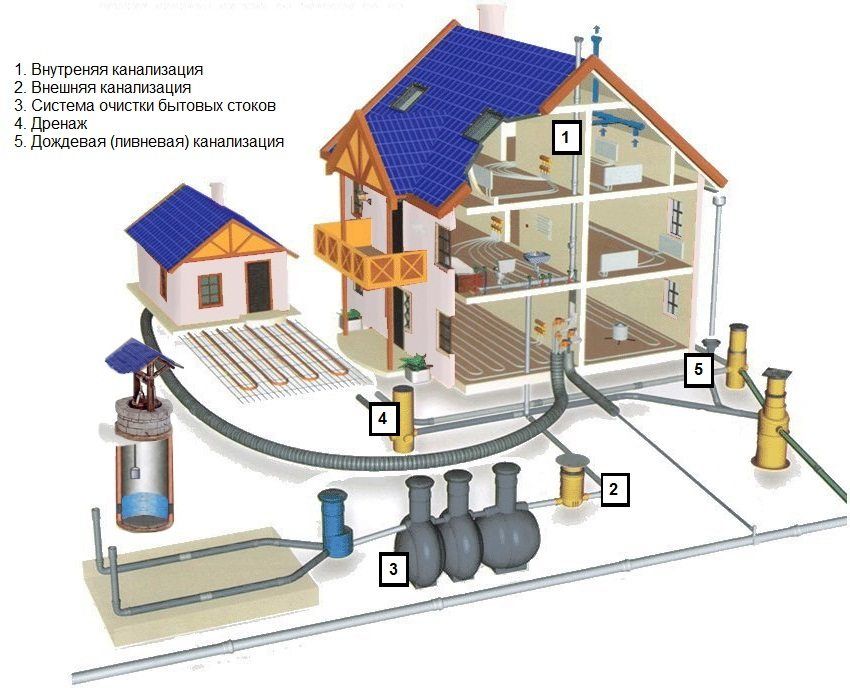
In addition, this number of sources of wastewater makes it difficult to complicate the sewer network. However, with the advent of PVC pipes for sewage, the dimensions of the structures were able to be kept within reasonable limits. The same circumstance allowed to significantly increase the degree of ease of installation and dismantling of sewage systems. After all, all components of PVC reinforcement have a dense, but easily assembled connection system.
Septic Tank, negative reviews and their validity. For what reason there are negative reviews about septic tanks Tank, how well they are justified and how to avoid frustration when installing.
Thus, the modern sewage system is a complex of intra-house distribution of sewage pipes that have a certain degree of slope in the direction of the drain. On leaving the house, the drain pipe enters the external tank, in which accumulation occurs, or the cleaning or recycling of domestic waste water in various ways. All sanitary appliances are equipped with siphons, which ensure the absence of odor in the room.

For example, take a two-story cottage with two bathrooms and a kitchen. On the second floor there is a toilet, and on the first floor there is a kitchen, a bathroom and another toilet. If the bathrooms are located approximately in the same vertical plane, then you will need one riser, and if in different, then two risers.
Vertical sewer risers are the largest pipe diameter, standing vertically. They connect the roof and basement. The drains from all plumbing fixtures converge in them. The risers at their lower points are connected to a horizontal pipe that slopes and extends outside the house. It leads to an external sewer.
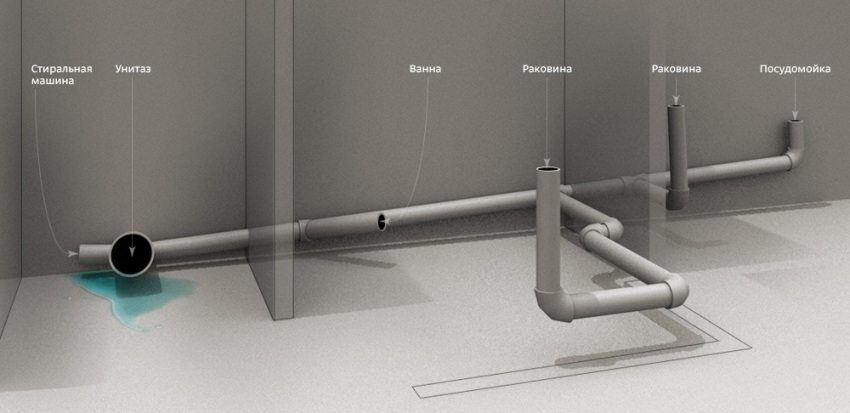
When moving through a pipe, the water that fills its entire section creates the effect of a piston. This happens, for example, when draining water from a toilet bowl. Behind this piston, an area of too low pressure is created, due to which all the water can simply be sucked out of the siphons of all plumbing fixtures. This causes the formation of an unpleasant odor in the rooms.
A high pressure is created in front of the piston, which is able to push water out of the siphons in front of it. To prevent this from happening, a ventilation device is required that will effectively equalize the pressure in the system during an explosive discharge of water. That is why the upper part of the risers is displayed in the attic and does not close.
In addition to the drain from the toilet, a similar effect of the piston is created when draining from the bath or washing machine, in which additional pressure is created by the pump. The same can be observed in the presence of long connections from plumbing fixtures to the riser and with an excessively large difference in the levels of the beginning and end of the supply pipe.
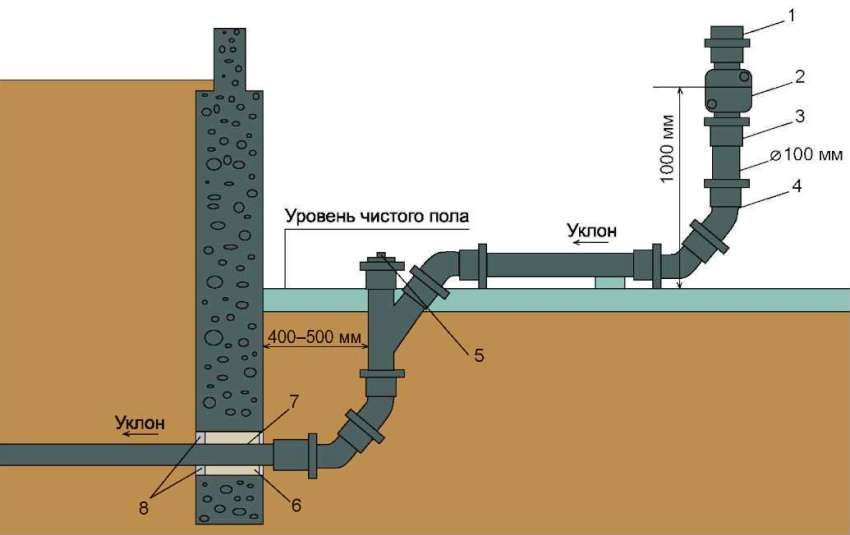
Helpful advice! When constructing a sewage system for a private house, not everyone knows how to properly position the toilet. Meanwhile, it must be connected to the riser separately from other devices. They, if possible, should be above this most “dangerous” device.
There are several basic rules for the construction of an internal sewer system, the violation of which is fraught with an imbalance in the work of the entire sewage system:
- the toilet to the riser is connected separately;
- appliances should be connected above the toilet. Otherwise, a splash of impurities in them is possible;
- all sanitary appliances, with the exception of the toilet, can be connected to one common supply;

- The diameter of the supply pipe must be somewhat larger or equal to the diameter of the largest pipe from the device that fits this connection;
- the diameter of any standpipe with a toilet should be larger and equal to the diameter of the pipe from the toilet. The standard is 100 mm. If a riser without a toilet bowl, then a 50-mm pipe is sufficient;
- eyeliner from the toilet to the riser can not exceed 1 m, and from other devices not more than 3 m. mm
Helpful advice! There is a way not to increase the diameter of the pipe with a large length of the liner. To do this, it is necessary to equip its upper end with a vacuum valve, which will create aeration. The second option is to connect the rear end of the liner with the ventilation pipe from the riser. In the same way, you can extend the liner to the toilet if necessary.
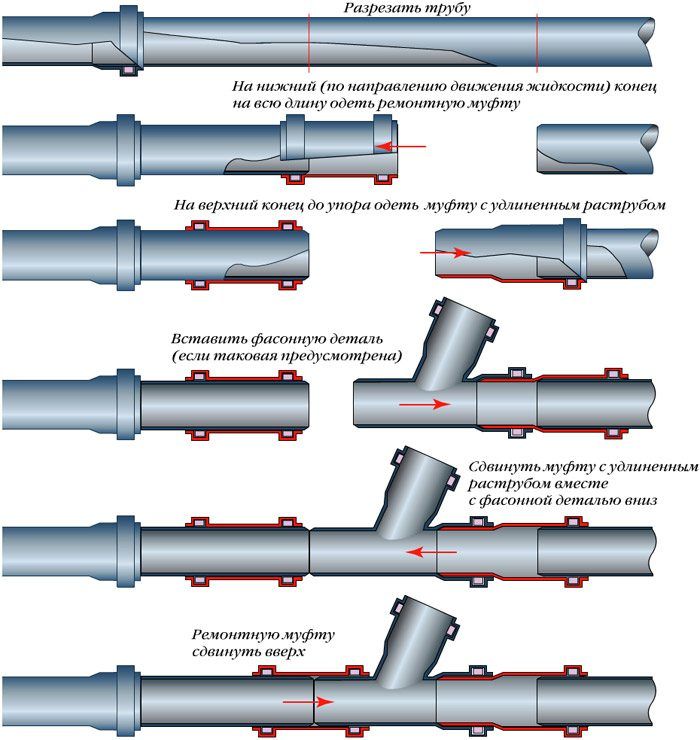
In addition to the above basic rules, when installing sewage, you need to take into account the equally important nuances:
- the most effective slope of the pipes lies in the range of 2–15%, which is 2–15 cm / pm. The difference in heights for the toilet is recommended not more than 1 m, and for other devices up to 3 m. With a greater height difference, arrange the upper ends of such liner;
- at the corners of the pipe should not be mated with each other by shaped parts having a rotation angle of 90 °. To do this, use standard parts that form a stream at an angle of 135 °;
- to create effective ventilation in the sewage system, pipes from the risers are placed above the roof not less than 50 cm. They cannot be connected to the ventilation system of the premises;
- properly installed, sewage for a private house, as it should be, should not exude unpleasant odors. To do this, sometimes do aeration valves in the upper parts of the hoses and risers. They allow air to enter the system, but do not allow it to go outside. This prevents the creation of a vacuum in such pipes;

- insulation of risers is made by installing them in special niches, closed with a layer of mineral wool and sheathed with sheets of drywall;
- the bottom of each of the risers is equipped with a special hatch for the audit;
- Horizontal PVC pipes for sewage, the dimensions of the diameters of which must be not less than the diameter of the riser, are laid in the basement. They, too, must have revision hatches after 15 m and on turns, which do not exceed 60 degrees;
- all pipes that are in unheated places and in freezing soil are reliably insulated.
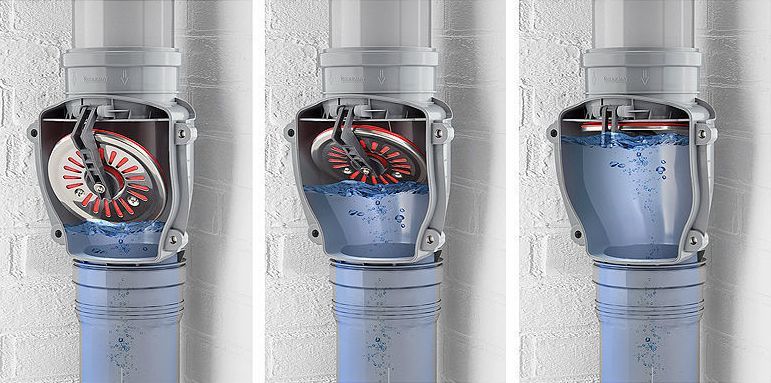
Helpful advice! To prevent sewage from entering the house when the septic tank overflows, a check valve is mounted inside the outlet pipe. It still prevents penetration into the house of rodents.
Each sanitary device in the house is connected to the liner not directly, but through a U-shaped small knee, which is called a siphon. At the bottom of it, at any moment in time, there is a liquid that creates a hydro-barrier for gases generated in sewage. Thanks to him, the smell does not penetrate the room.
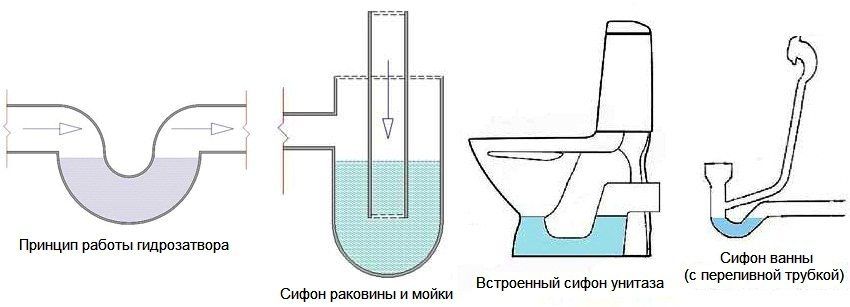
If inside the house there is an unpleasant sewage odor from a plumbing fixture, this may mean the following:
- Drying of water in siphons due to their long inactivity. This can happen in summer houses, where people are rare. Therefore, when leaving the drain holes should be closed.
- The sewage system for a private house was not installed correctly. As a rule, this happens with insufficient attention to the ventilation device.
In order to prevent this, the ventilation is made of PVC pipes for sewage, the dimensions of which must be at least 100 – 110 mm. Its upper end should be above the roof.
Observing the proposed rules, you can independently assemble the internal sewage system of the house, which will function without serious problems.
